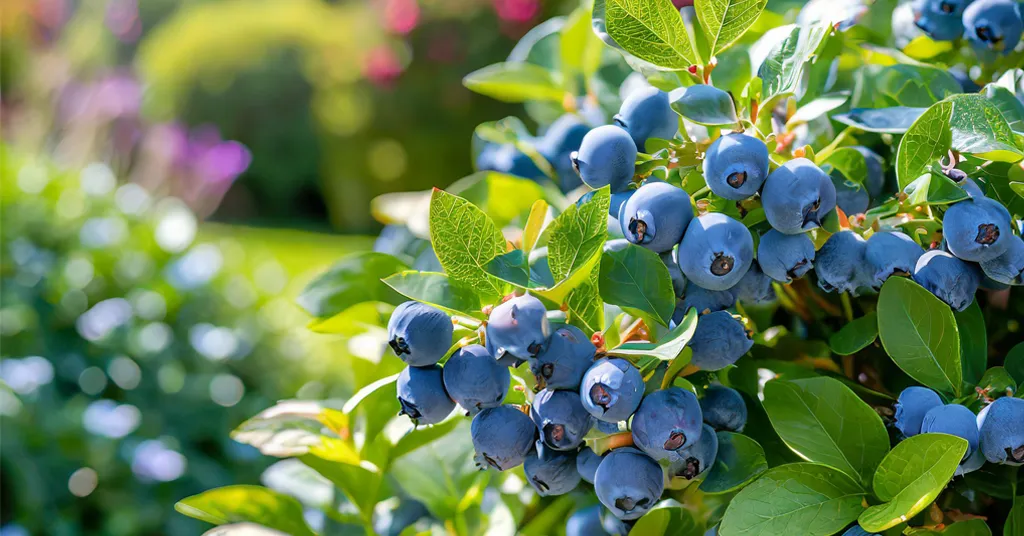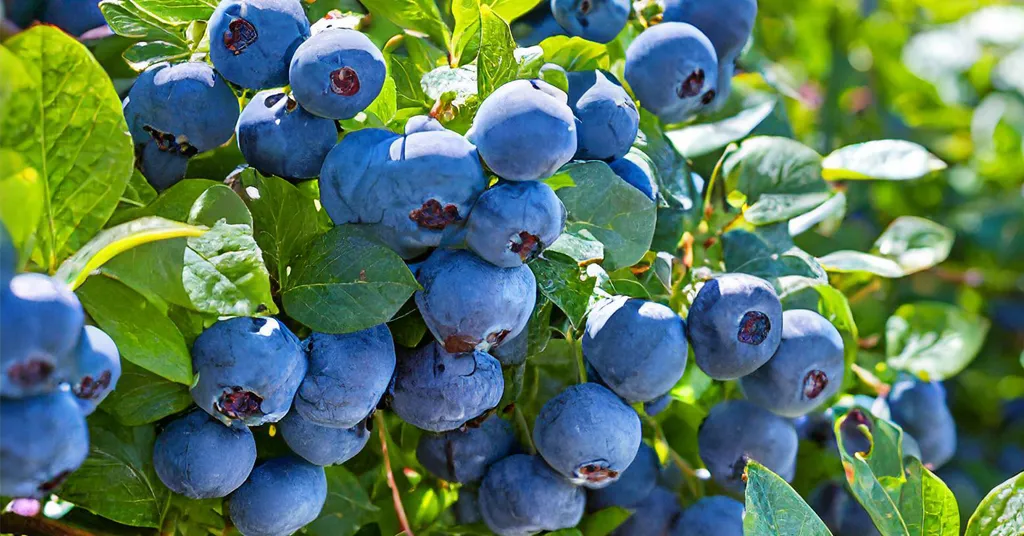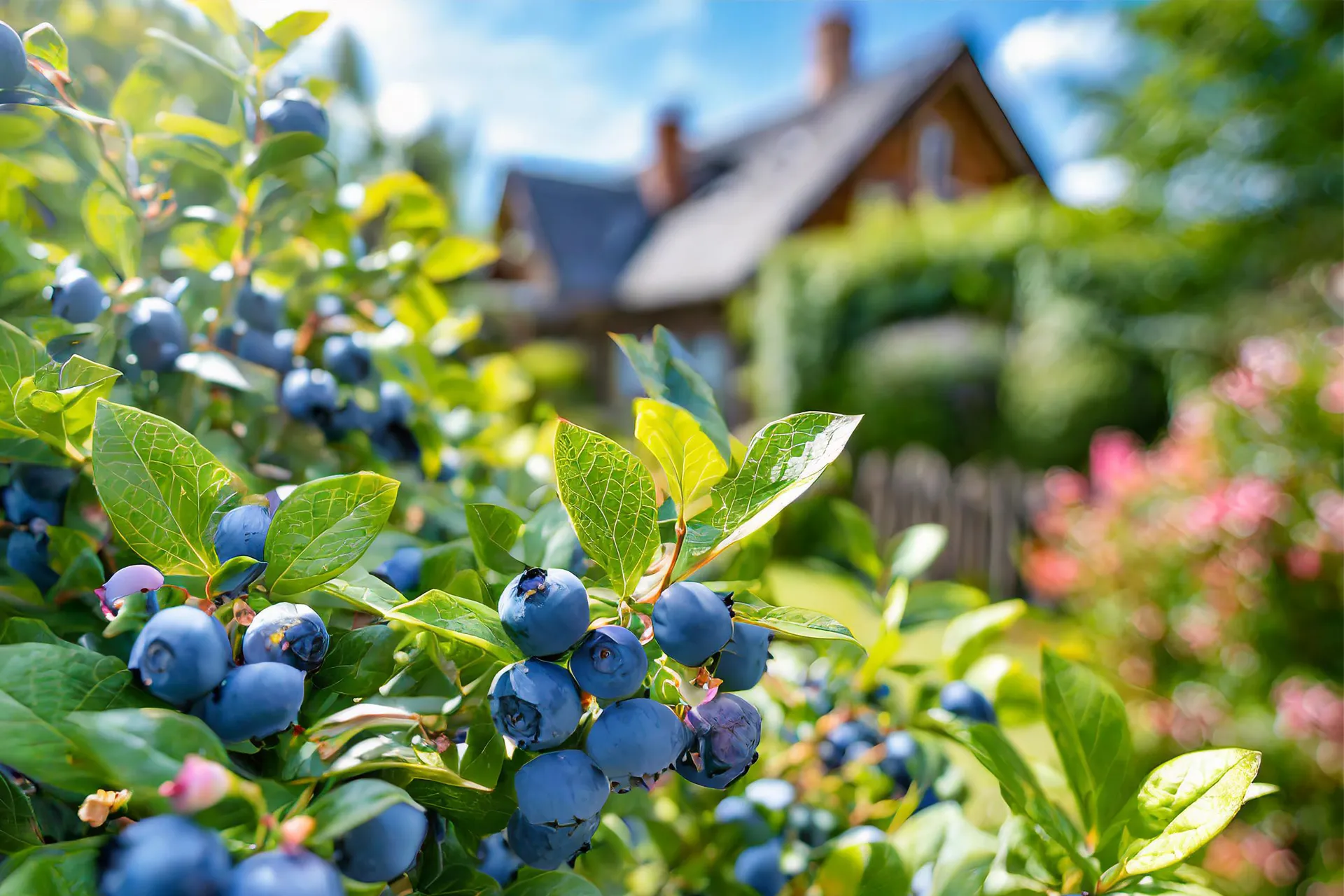This post may contain affiliate links. When you purchase through links on my site, I may earn a commission at no cost to you. See my Privacy Policy for details.
Blueberries are not only delicious but also incredibly nutritious, packed with antioxidants and vitamins. Growing your blueberries can be a rewarding experience, providing you with a fresh supply of these juicy berries right from your garden. I will walk you through everything you need to know to successfully grow blueberries in your garden, from choosing the right variety to caring for your plants.
Benefits of Growing Blueberries
- Blueberries are rich in antioxidants, which can help prevent cell damage and reduce the risk of chronic diseases.
- They are easy to grow and require minimal maintenance once established.
- Blueberry bushes produce beautiful flowers in spring and colorful foliage in fall, adding beauty to your garden.
Choosing the Right Blueberry Variety
When it comes to growing blueberries, choosing the right variety for your location and climate is crucial. There are three main types of blueberries: highbush, lowbush, and rabbiteye.
- Highbush blueberries are ideal for most home gardens, as they grow well in various soil types and climates and produce large, flavorful berries.
- Lowbush blueberries are perfect for colder climates and can be used for ground cover.
- Rabbiteye blueberries are more suited to warmer climates and are known for their large, flavorful berries.

Where to Buy Blueberry Plants
You can typically find blueberries suited for your area at your local nursery. You can also purchase plants from online retailers. I have purchased my blueberry plants from Stark Brothers Nursery. I am currently growing Bluecrop Blueberries and Jersey Blueberries.
Planting Blueberries
Selecting the Perfect Location
- Blueberries require full sun for optimal growth and fruit production.
- They prefer well-drained, acidic soil with a pH level between 4.5 and 5.5. If your soil is not acidic enough, you can amend it with sulfur or peat moss.
- Good air circulation around the plants helps prevent diseases.
Preparing the Soil for Growing Blueberries
Blueberries prefer acidic soil with a pH between 4.5 and 5.5. Before planting, test your soil pH and amend it if necessary. Incorporate plenty of organic matter, such as compost or peat moss, to improve soil texture and fertility.
Planting Process
Plant blueberries in early spring or late fall, when the soil is workable. Choose a sunny location with well-drained soil. Dig a hole twice as wide and deep as the root ball of the blueberry plant. Place the plant in the hole, backfill with soil, and water thoroughly. Space plants 4-6 feet apart in rows spaced 8-10 feet apart.
Blueberry Plant Care and Maintenance
Caring for blueberry plants involves regular watering and fertilizing.
Watering
Blueberries have shallow roots and require regular watering, especially during dry periods. Keep the soil consistently moist but not waterlogged.
Fertilizing
Fertilize blueberries in early spring with a balanced fertilizer, following the manufacturer’s instructions. Avoid over-fertilizing, as this can damage the plants.

Pruning
Prune blueberry bushes in late winter to remove dead or damaged branches and promote new growth. Remove any low-growing branches to improve air circulation and reduce disease.
Mulching
Mulch around blueberry plants with pine needles, wood chips, or bark mulch to conserve moisture, suppress weeds, and maintain soil acidity.
Protecting Blueberry Plants from Pests and Diseases
Protecting blueberry plants from pests and diseases is crucial for a successful harvest. Common pests that attack blueberries include aphids, spider mites, and fruit flies. To prevent infestations, keep your garden clean and free of debris, and use insecticidal soap or neem oil if necessary. Blueberries are also susceptible to diseases such as powdery mildew and mummy berry. To prevent these diseases, avoid overhead watering and prune your plants regularly to improve air circulation.
Common Problems with Growing Blueberries
- Pest control can be managed through regular inspection and the use of organic or chemical controls.
- Diseases such as powdery mildew and root rot can be prevented by practicing good garden hygiene and proper watering techniques.
- Nutrient deficiencies can be corrected by applying the appropriate fertilizer according to soil test results.
Harvesting and Storing Blueberries
Harvesting blueberries is the most rewarding part of growing them. Blueberries are ready to harvest when they are fully ripe, which is typically indicated by their deep blue color. Simply pick the berries by hand, being careful not to crush them, and enjoy them fresh or use them in your favorite recipes.
- Blueberries are typically ready for harvest in mid to late summer, depending on the variety.
- Store freshly picked blueberries in the refrigerator for up to two weeks or freeze them for long-term storage.
- Use blueberries in a variety of recipes, including smoothies, muffins, and pies.
Frequently Asked Questions (FAQs):
- How long does it take for a blueberry bush to bear fruit? Blueberry bushes typically start producing fruit in their third year after planting.
- Do blueberry bushes need full sun? Yes, blueberry bushes require full sun for optimal growth and fruit production.
- How often should blueberries be watered? Blueberries should be watered regularly, especially during dry periods, to keep the soil evenly moist.
- Can you grow blueberries in pots? Yes, blueberries can be grown in pots, but choose a variety that is suitable for container growing.
- How do you prune blueberry bushes? Prune blueberry bushes in late winter or early spring to remove dead or damaged branches and encourage new growth.
- What is the best way to protect blueberry bushes in winter? Protect blueberry bushes from winter damage by mulching around the base of the plants and covering them with burlap or a frost blanket.
Growing blueberries in your garden can be a rewarding experience, providing you with fresh, delicious berries and beautiful foliage. By choosing the right variety, planting them in the right location, and providing them with proper care, you can enjoy a bountiful harvest of blueberries for years to come.

